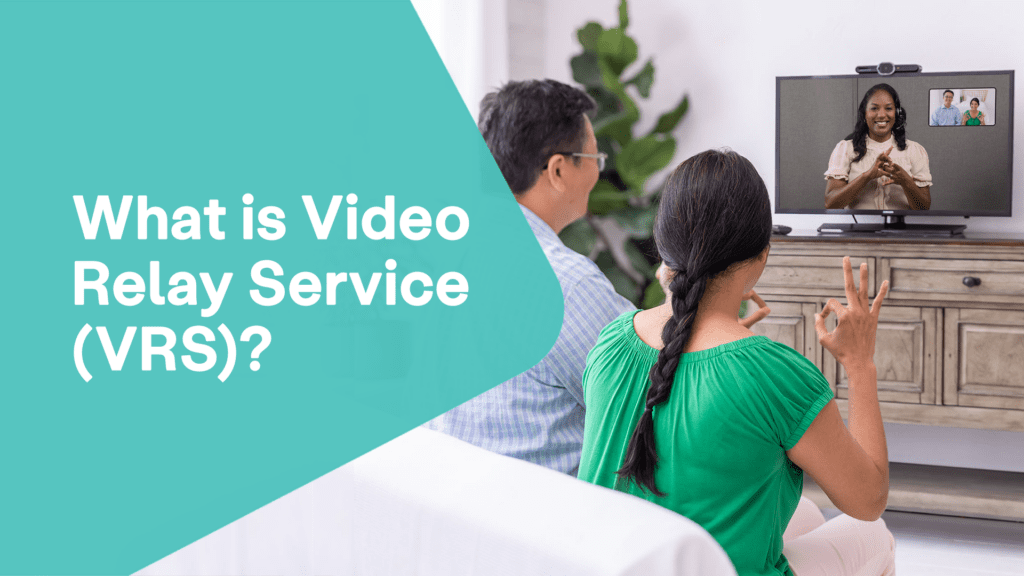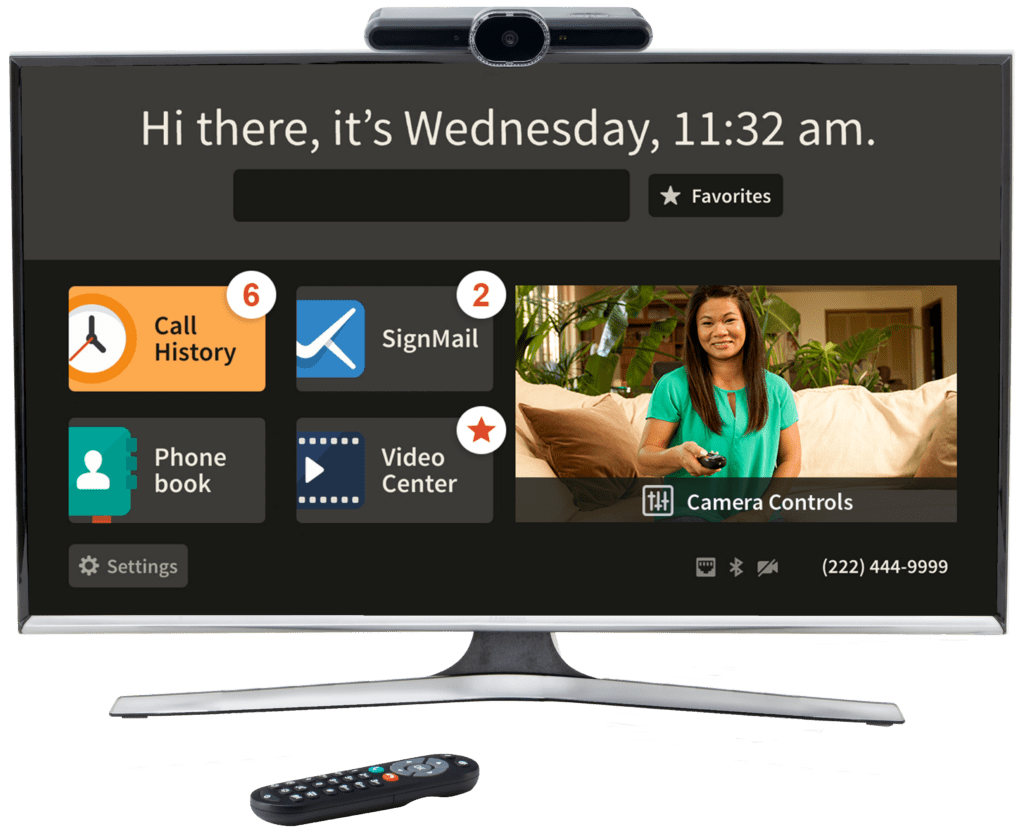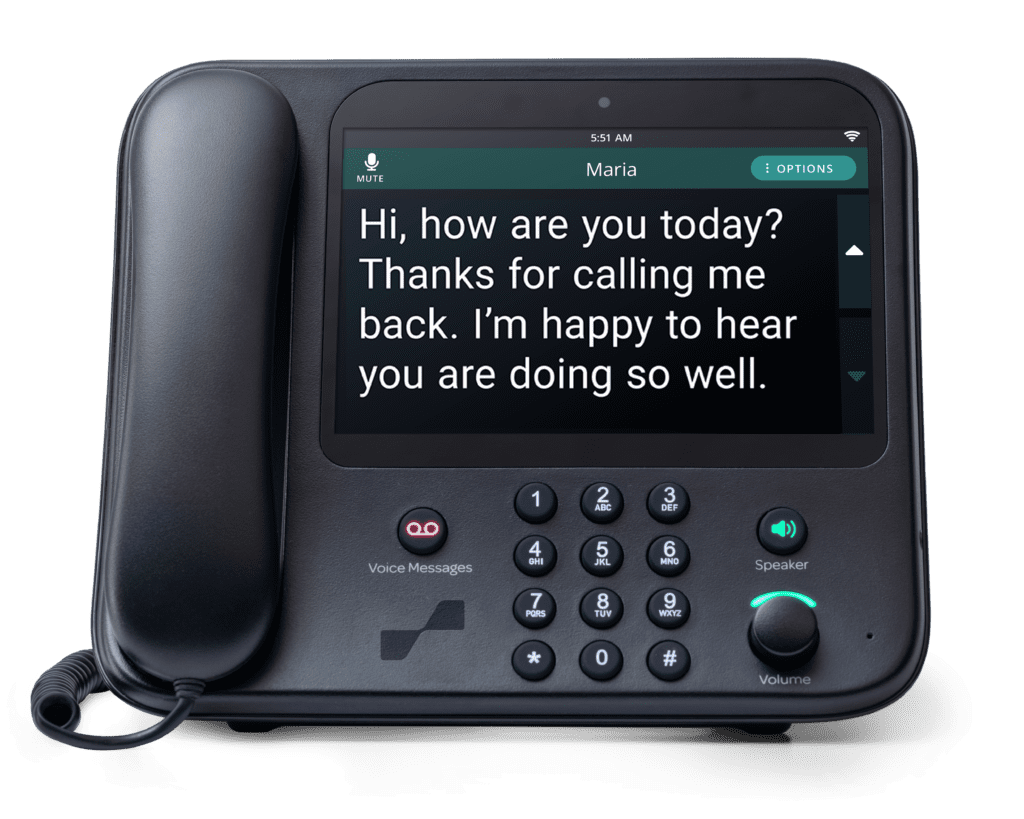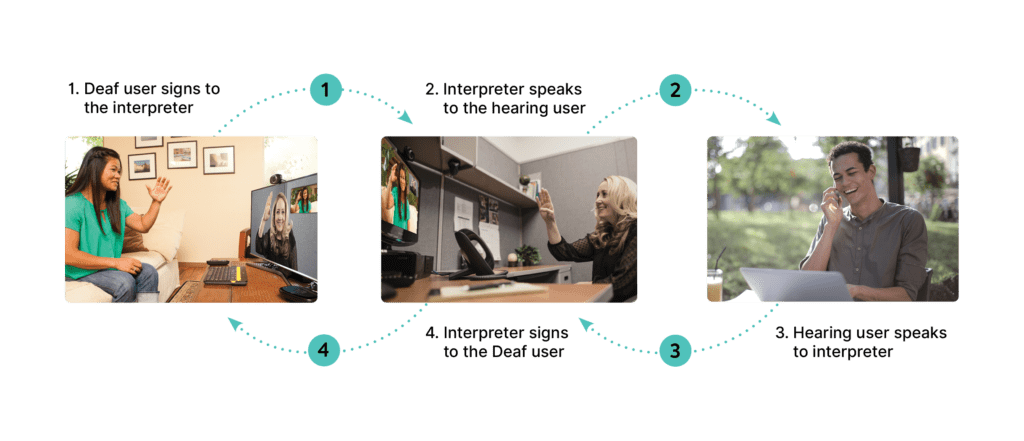What is Video Relay Service (VRS)?

Video Relay Service (VRS) is available through the Telecommunications Relay Service (TRS) program. It provides interpreting services to the Deaf via communication through videophones using American Sign Language (ASL). The Federal Communications Commission (FCC) manages the TRS program as a requirement under the Americans with Disabilities Act (ADA) of 1990 as well as the TRS fund that pays for it.
VRS is a no-cost, subscriber-based service for Deaf people with a qualifying hearing loss who use ASL and have videophones, smart phones, tablets, or computers that are set up for video communication. VRS started when videophones were first available to users in 2003.
What is a Videophone?
A videophone is a device that connects directly to the internet and is used to send and receive video and in some cases audio. It may be a standalone device that includes a camera and screen all in one, or it can be a device that contains the camera and other processing equipment that mounts on a separate screen such as a TV or computer monitor.

What is the TRS Fund?
The TRS fund covers the costs of the TRS program and, therefore, VRS. The money comes from a small surcharge on everyone’s telephone bills. The charge may not be obvious by name and may be wrapped up with other charges.
It also pays for other relay services such as Teletypewriter (TTY) relay, caption relay, and call captioning services. (These relay services are for Deaf and hard-of-hearing people who use devices other than videophones.)

How is VRS Used?
A Deaf person subscribes — or signs up with — a VRS provider certified by the FCC. The VRS service assigns a local 10-digit phone number and password to the subscriber. They use the number and password to log into a videophone or video relay app from the VRS provider. Users can install these apps on devices set up for video communication such as a smart phone, tablet, or computer.
When a Deaf person makes an outgoing call through VRS, they dial the number they want to call through the videophone or app. That call, by default, goes through the VRS provider they subscribed with.
An interpreter working for the VRS provider answers the call and checks to see if the Deaf person has any instructions for the call. Then the interpreter connects with the other end of the call. The interpreter communicates with the Deaf person using ASL and with the hearing person using spoken English. Some VRS services also provide interpreters that speak and translate Spanish into ASL.

Are There Any Limitations to VRS?
Deaf people aren’t limited in how many VRS services they can subscribe to. They aren’t limited to using only the VRS service that assigned them the local 10-digit number they used to log into the device they are using to make the call. They can dial another VRS service and give the interpreter the number of the hearing person or company they want to call, even if they aren’t subscribed to that VRS service. VRS is only for use in the same manner as typical telephone use. Users can’t make VRS calls to someone in the same room, for example. There is no cap on the number of calls they can make or the length of a call.
Hearing people don’t need to subscribe to a VRS service. And they don’t need to wait for a Deaf person to initiate a call. If they call a Deaf person using the Deaf person’s VRS phone number, they’ll connect to the interpreter and then the Deaf person using the same process.
What is Video Remote Interpreting (VRI) and How is it Different From VRS?
Video Remote Interpreting (VRI) is an interpreting service for situations when VRS or in-person interpreting isn’t available.
VRS and VRI serve different purposes and are funded differently. The TRS fund pays for VRS and that service is for telephone calls between people who are not in the same location. The user pays for VRI, but that also allows more flexibility in usage.
VRI fills the gap between VRS and in-person ASL interpreting. There are many circumstances where it’s not feasible for an interpreter to be present in-person but VRS isn’t an option because both the Deaf and hearing people in the conversation are in the same room.
VRI is similar to VRS in that VRI calls connect over a high-speed internet connection via a video conferencing platform. But users can’t access a VRI service by dialing the phone number of a VRS service and the TRS fund doesn’t pay for it. Just like in-person interpreting, one of the users — usually a business or organization such as a doctor’s office or a company that employs or is interviewing a Deaf person — has a contract or account with a VRI provider and has a contact number to use.
What is Sorenson Video Relay Service?
Sorenson Video Relay service is an easy and convenient solution for both deaf and hearing users to communicate between their primary languages. Sorenson offers both videophones and apps for desktops and smartphones that are designed for and with the Deaf. Sorenson’s 6,000+ interpreters are screened and trained to offer the best ASL interpreting available. To learn more about Sorenson Video Relay, visit sorenson.com/solutions/video-relay-services/.

